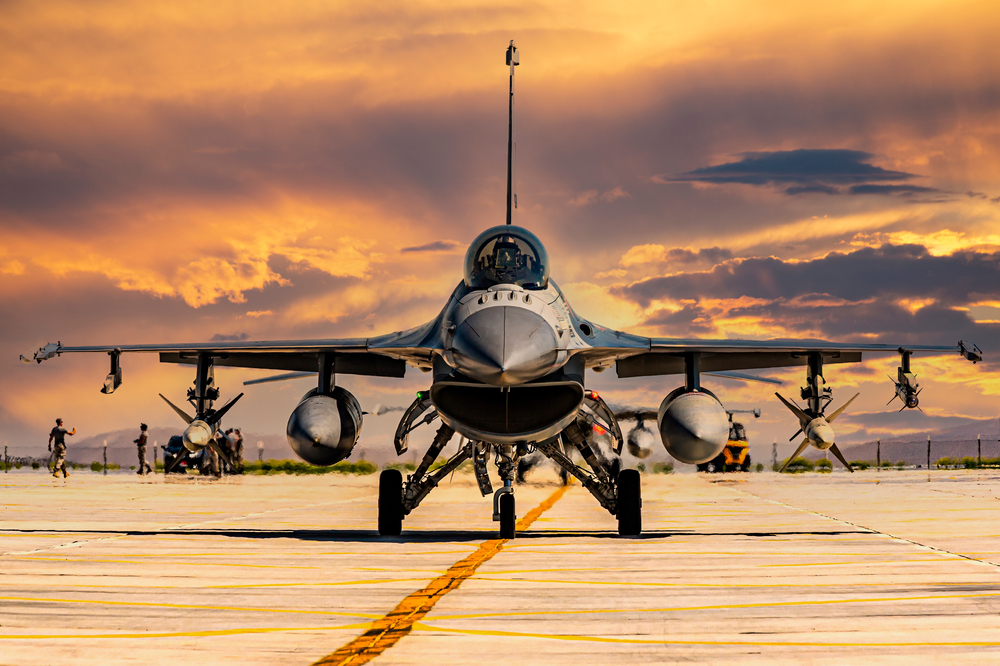Turkey is currently seeking to develop its air capabilities by supporting its domestic military aviation industry alongside its search for new suppliers, in response to the US’s refusal to grant Ankara F16 jets, as well as excluding it from the F35 production program. Although Turkey possesses a considerable military force, particularly after strides in the development of its domestic defense industries, its weakness is evident in the air force. The difficulty of acquiring US warplanes has compounded challenges for the Turkish Air Force, and exacerbated potential threats to Ankara, particularly as tensions in its geostrategic environment escalate, along with its military involvement in regional conflicts such as Syria and Libya.
Mounting Pressure
Several concerns are driving Turkey to strengthen its air capabilities at this particular time. The first of which is that Turkey fears the successful development of Greece’s air capabilities and is concerned that this may enhance the likelihood of Greek military strikes against it as the contentions in the East Mediterranean and the Aegean continue. Greece updated the Defense Cooperation Treaty with Washington at the end of last year and received two F-16 Viber fighter jets last September. These represent part of a program with a total value of $1.5 billion to modernize the Greek air force, including updating 83 Greek fighters and receiving 4 additional updated aircrafts before the end of this year. Greece has also entered into advanced stage of negotiations with the US to purchase several MQ-9 drones.
At the same time, in January 2021, Greece signed a 2.5-billion-euro contract for the purchase of 18 Rafale fighter jets from France, which significantly improved the capabilities of the Greek air force. Turkey views military cooperation between Greece and Western powers as a direct threat due to numerous considerations. Greek Prime Minister Kyriakos Mitsotakis during his recent visit to Washington last July attempted to block negotiations to sell F-16 fighters to Ankara, which was of concern to Turkey. Indeed, Turkish Defense Minister Hulusi Akar remarked last September that, Greece is aiming to break the balance of power in the Aegean by updating and enhancing its military power.
Secondly, the bulk of Turkey’s fighter fleet, although composed of F16 aircraft, is outdated and in need of development and maintenance. Ankara has requested the Biden Administration to facilitate the acquisition of 40 new Block 70/72 F-16 aircrafts, the model’s most advanced variant, as well as upgrade a significant portion of its aircrafts. Thirdly, Turkey’s desire to strengthen its air capabilities is inseparable from its concerns following Washington’s lifting last September of the arms embargo on Greek Cyprus, a move that Turkey considers will reignite the conflict on the divided island.
Coping mechanisms
With the increasing fears of a decline in Turkish air capabilities, which coincides with an escalating potential of regional threats, Ankara has moved to mitigate those risks, which can be outlined as follows:
The development of local air systems: Besides Turkey’s keenness to enhance its imports of air armaments, Turkey allocates a large budget for domestic development, as illustrated by the start of Turkey’s domestic aircraft production project in September 2018. Additionally, Turkish Aerospace Industry (TUSAS) and Havelsan have signed a cooperation agreement to produce domestic fighters that could substitute the F-16. This domestic aircraft is to be manufactured by TUSAS, in cooperation with ASELSAN, which specializes in electronic and military industries. The Turkish fighter jet is expected to gradually replace US F-16s starting 2030.
On a related note, Turkey is constantly developing its drone industry to support its air force. In this context, on March 12, 2022, Turkey’s BAYKAR Defense Industries announced that the Mius fighter drone has entered the production phase. Turkey’s announcement of the production of a new generation of drones coincided with ongoing Turkish attempts to develop the drone sector. These attempts aim to strengthen the integrated offensive and defense air capabilities in order to deter adversaries, as well as overcoming the challenges facing the Turkish air force following Washington’s refusal to conclude a number of defense deals with Ankara.
Alluding to the acquisition of Russian Sukhois: Turkey may be moving towards the possibility of purchasing Sukhoi-35 fighters from Russia. Ismail Demir, head of Turkey’s Defense Industries Authority, warned last September that Ankara would consider buying Sukhoi-35 fighters from Russia if the US refuses to supply them with modern F-16 aircraft.
Several considerations may prompt Ankara to acquire Sukhoi 35. These include Turkey’s earlier acquisition of the Russian S400 missile defense system, which may be both more effective and less expensive. On the other hand, seeking out the Russian option could raise tensions between Ankara and Western powers, particularly Washington, which has been imposing sanctions on Turkey since it acquired the Russian defense system S400.
Developing a relationship with international partners: With Congress setting complex requirements for Turkey’s acquisition of more advanced F-16s, Turkey may move to strengthen cooperation with international partners, particularly the UK, to meet the needs of the Turkish Air Force. In June 2022, Turkish sources and press reports announced talks between Ankara and London on the possibility of the former acquiring a number of Eurofighter Typhoons, a 5G advanced warplane. Eurofighters are a preferred option for Turkey during the next phase, given the UK’s desire to deepen its military cooperation with Turkey, as revealed by the recent lifting of restrictions on arms exports to Turkey in 2019 following Ankara’s military operation in northern Syria.
In the context of developing defense capabilities, Turkey has also succeeded in bargaining with advanced players in air industry, specifically Sweden. Ankara was keen to use Sweden’s desire to join NATO to resolve outstanding issues between the two countries, such as handing over Kurdish opponents residing in Sweden to Ankara. Turkey is also attempting to implement pressure to obtain Swedish war aviation technology, particularly the Saab JAS 39 Gripen. In this context, Sweden announced, on September 30, the lifting of the arms embargo on Turkey, and the Swedish Arms Export Control Corporation said in a statement that it would re-permit the export of arms to Turkey, noting that its recent decision was linked to the application for NATO membership.
Arrested Development
In conclusion, it can be said that the development of the military capabilities of the Turkish air force remains dependent on its ability to develop its defense industries, on the one hand, and its ability to neutralize and absorb Western pressures if it opens up to new international sources, in particular Moscow, on the other.


